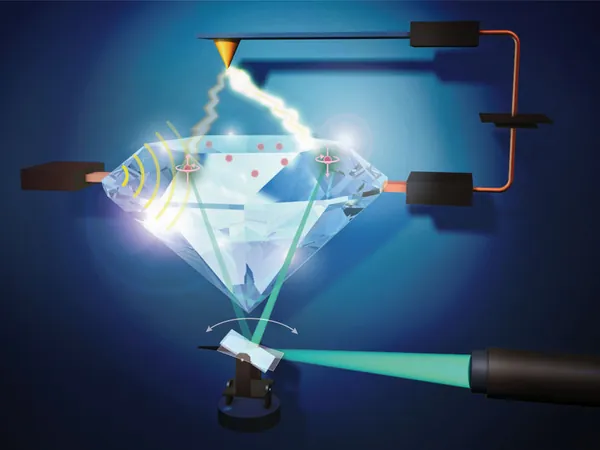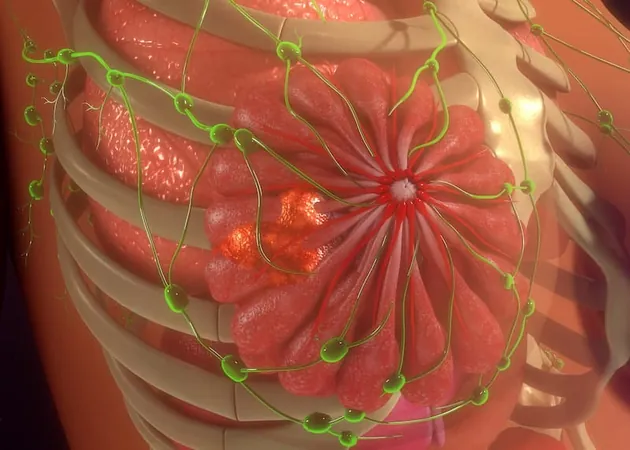
Revolutionary Breakthrough: Detecting Single Spins with Photovoltage!
2025-04-17
Author: Ming
Unlocking the Power of Defects in Diamonds
In the realm of materials science, defects are often seen as a flaw. Yet, in diamonds, they present incredible opportunities! Introducing nitrogen vacancy (NV) centres—exotic defects that can be manipulated with microwaves, turning them into superstars of quantum technology. These diamonds are not just stunning gems; they hold the potential for ultra-sensitive sensors and powerful qubits for future quantum computers.
The Challenge: Weak Optical Signals
Traditionally, detecting the state of these individual spins has been a daunting task. Each spin emits only a single photon when it flips, resulting in an incredibly weak signal. This limitation has necessitated complex setups to measure these elusive emissions.
A Game-Changing Innovation: Photovoltage Detection
Enter a groundbreaking solution from a team at HZB. Dr. Boris Naydenov leads a project that has reimagined the approach to detecting spin states by leveraging the electrical charge associated with NV centres. Using a refined version of atomic force microscopy—specifically, Kelvin probe force microscopy (KPFM)—the team has devised a method where a laser stimulation excites the NV centres. This generates free charge carriers that create a measurable voltage around the NV centre itself!
Capturing Spin Dynamics Like Never Before
The beauty of this new technique lies in its ability to gauge the electron spin state of each NV centre. Sergei Trofimov, a PhD student involved in the project, explains, 'We can actually read out the individual spin.' This method also allows researchers to observe spin dynamics by coherently manipulating the spin states with microwaves. This is a massive leap forward!
Envisioning a Future with Tiny Diamond Devices
The implications of this discovery are staggering. Prof. Klaus Lips, head of the Spins in Energy Conversion and Quantum Information Science department, envisions a future filled with compact diamond-based devices. 'We could produce such devices using just suitable contacts, eliminating the need for intricate optical setups and single-photon detectors,' he explains. This innovative readout method could revolutionize various fields in solid-state physics where spin defects have been noted.
Get ready for a new era of quantum technology, fueled by diamond's hidden potential!



 Brasil (PT)
Brasil (PT)
 Canada (EN)
Canada (EN)
 Chile (ES)
Chile (ES)
 Česko (CS)
Česko (CS)
 대한민국 (KO)
대한민국 (KO)
 España (ES)
España (ES)
 France (FR)
France (FR)
 Hong Kong (EN)
Hong Kong (EN)
 Italia (IT)
Italia (IT)
 日本 (JA)
日本 (JA)
 Magyarország (HU)
Magyarország (HU)
 Norge (NO)
Norge (NO)
 Polska (PL)
Polska (PL)
 Schweiz (DE)
Schweiz (DE)
 Singapore (EN)
Singapore (EN)
 Sverige (SV)
Sverige (SV)
 Suomi (FI)
Suomi (FI)
 Türkiye (TR)
Türkiye (TR)
 الإمارات العربية المتحدة (AR)
الإمارات العربية المتحدة (AR)